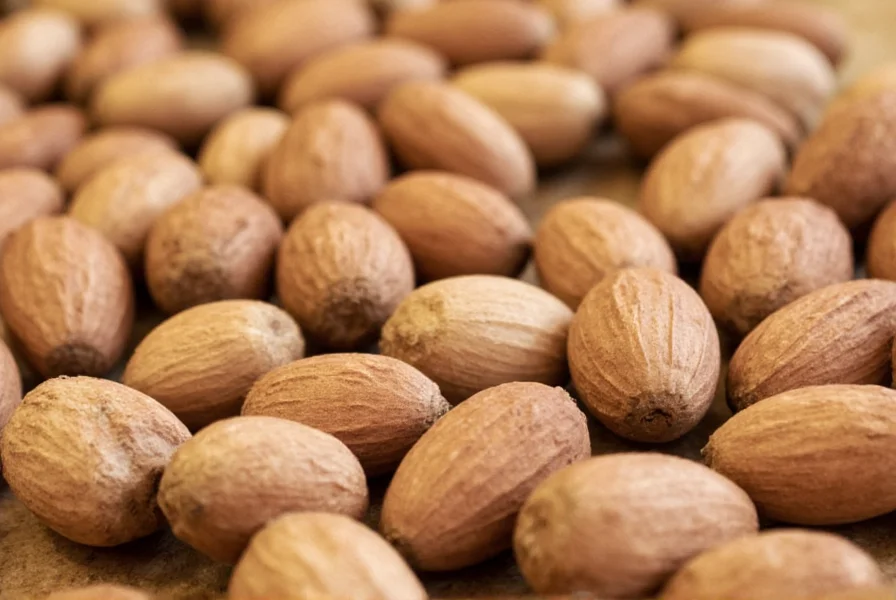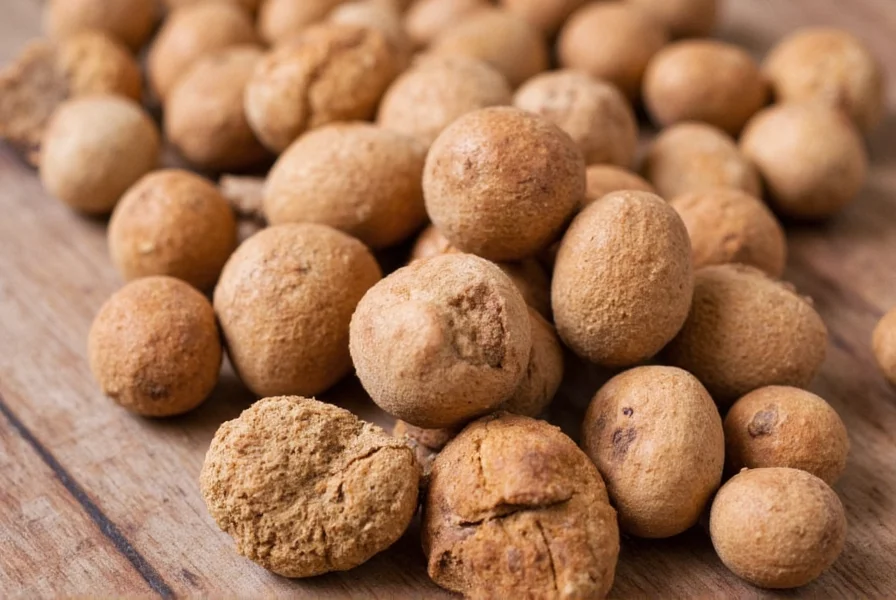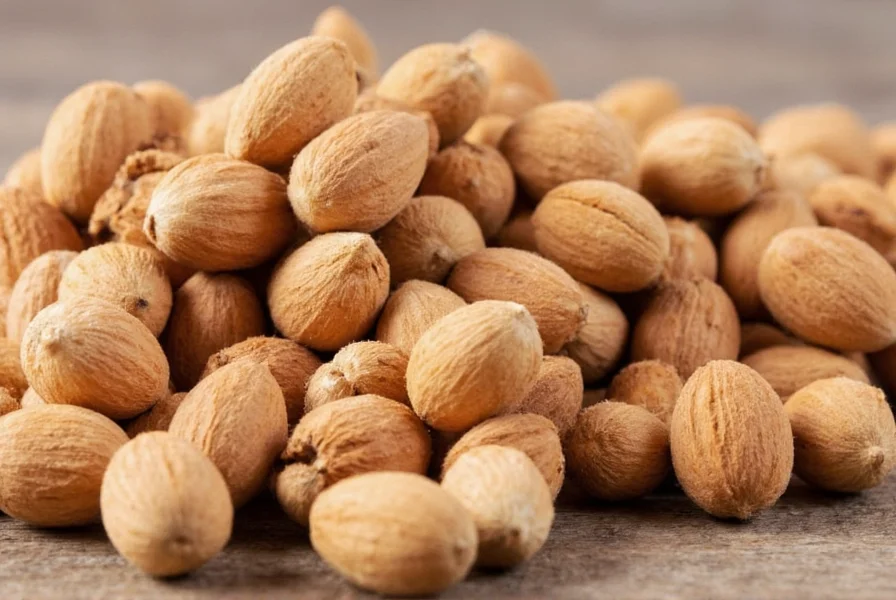Nutmeg isn't just another kitchen staple—it's a botanical marvel with a rich history spanning continents and centuries. Understanding what nutmeg is requires exploring its botanical origins, culinary applications, and unique properties that distinguish it from other spices.
Botanical Background and Historical Significance
The Myristica fragrans tree, belonging to the Myristicaceae family, produces two valuable spices from a single fruit: nutmeg (the seed) and mace (the lacy red covering surrounding the seed). Indigenous to the Maluku Islands (formerly known as the Spice Islands) of Indonesia, nutmeg cultivation remained exclusive to this region for centuries before spreading to other tropical areas including Grenada, India, Malaysia, and Sri Lanka.
Historically, nutmeg's value was so extraordinary that it sparked international conflicts during the 16th and 17th centuries. European powers fought for control of the Spice Islands, with the Dutch even exchanging the island of Manhattan to the British for control of Run Island, one of the primary nutmeg-producing islands. This "spice race" underscores nutmeg's historical importance as one of the world's most coveted commodities.
Physical Characteristics: Nutmeg vs. Mace
Understanding what nutmeg is requires distinguishing it from its companion spice, mace. When the fruit of the Myristica fragrans tree ripens, it splits open to reveal:
| Characteristic | Nutmeg | Mace |
|---|---|---|
| Origin | Seed inside the fruit | Aril (lacy covering) surrounding the seed |
| Color | Brown | Red to orange |
| Flavor Profile | Warm, sweet, nutty with subtle citrus notes | More delicate, slightly sweeter, and less intense |
| Common Forms | Whole seeds or ground powder | Whole blades or ground powder |
While both spices come from the same fruit, they're used differently in cooking. Chefs often select between nutmeg and mace based on the specific flavor profile they want to achieve in a dish.

Culinary Applications Around the World
When exploring what nutmeg is in practical terms, its culinary versatility stands out. This spice enhances both sweet and savory dishes across numerous culinary traditions:
- European cuisine: Essential in béchamel sauce, potato dishes, and holiday recipes like eggnog and Christmas pudding
- Indian cuisine: Key component in garam masala and various meat curries
- Caribbean cuisine: Featured prominently in jerk seasoning and holiday punches
- Baking applications: Complements pumpkin, apple, and other fall flavors in pies and cakes
- Savory applications: Enhances mashed potatoes, creamed spinach, and meatloaf
Chefs and home cooks seeking authentic flavor profiles often debate whether to use whole nutmeg versus pre-ground versions. Whole nutmeg, when freshly grated, delivers significantly more aromatic compounds and complex flavors compared to pre-ground alternatives that lose potency during storage.
Nutritional Profile and Health Considerations
Nutmeg contains several beneficial compounds, including myristicin, elemicin, and safrole, which contribute to both its flavor and potential health effects. A single teaspoon (2g) of ground nutmeg provides:
- Approximately 12% of the daily recommended intake of manganese
- Small amounts of copper, magnesium, and vitamin B6
- Dietary fiber and plant compounds with antioxidant properties
While moderate culinary use of nutmeg is generally safe, consuming large quantities (more than 1-2 teaspoons) can cause adverse effects due to myristicin content. Symptoms of nutmeg toxicity may include dizziness, nausea, rapid heartbeat, and hallucinations. This is why understanding what nutmeg is and how to use it properly matters for both flavor and safety.

Proper Storage and Usage Techniques
To maximize the flavor and shelf life of nutmeg, proper storage is essential. Whole nutmeg seeds maintain their potency for up to 4 years when stored in an airtight container away from light and moisture. Ground nutmeg, however, begins losing its volatile oils within 6-12 months.
For best results when using nutmeg in cooking:
- Use a fine grater or specialized nutmeg grater for whole seeds
- Add nutmeg toward the end of cooking to preserve volatile aromatic compounds
- Start with small amounts (1/8 to 1/4 teaspoon per serving) as it's potent
- Balance with complementary spices like cinnamon, cloves, or allspice
Professional chefs often keep whole nutmeg seeds in their kitchen for daily use, recognizing the significant flavor difference between freshly grated and pre-ground versions. This practice represents one of the key distinctions between amateur and professional cooking techniques when working with what nutmeg is capable of delivering.
Common Questions About Nutmeg
What is nutmeg made from and how is it harvested?
Nutmeg is the seed of the Myristica fragrans tree fruit. When the fruit ripens, it splits open to reveal the seed surrounded by mace. Harvesters collect the fruit, separate the mace from the seed, then dry both components. The nutmeg seed hardens during drying, becoming the familiar spice we use in cooking.
Is nutmeg safe to consume daily in cooking?
Yes, nutmeg is safe to consume in typical culinary amounts (up to 1/4 teaspoon per serving). The compounds that cause adverse effects are only present in concerning quantities when consuming multiple teaspoons at once. Regular culinary use provides flavor benefits without safety concerns.
What's the difference between nutmeg and mace?
Nutmeg is the seed of the Myristica fragrans fruit, while mace is the lacy red covering (aril) that surrounds the seed. Though they come from the same fruit, they have distinct flavor profiles—nutmeg is stronger and warmer, while mace is more delicate and slightly sweeter. In cooking applications, they're not always interchangeable due to these flavor differences.
Can I substitute ground nutmeg for whole nutmeg in recipes?
Yes, but with flavor considerations. As a general rule, 1/4 teaspoon of ground nutmeg equals one gratin of whole nutmeg. However, freshly grated whole nutmeg contains more volatile aromatic compounds, delivering superior flavor. For best results in important dishes, use whole nutmeg when possible, especially in recipes where nutmeg is a featured flavor.
Why does my nutmeg taste bitter?
Bitter nutmeg typically indicates one of two issues: either the spice is old and has oxidized (ground nutmeg loses potency within 6-12 months), or you've used too much. Nutmeg becomes bitter when overused—start with small amounts (1/8 teaspoon per serving) and adjust to taste. Freshly grated whole nutmeg from a recently purchased seed should have a warm, sweet aroma without bitterness.











 浙公网安备
33010002000092号
浙公网安备
33010002000092号 浙B2-20120091-4
浙B2-20120091-4